Quel est le processus d'usinage au tour CNC? Quels types de pièces peuvent être usinées par un tour de précision, et quelle précision peut-il atteindre?
C'est un processus par lequel des surfaces de révolution sont créées par enlèvement de copeaux.. Cela engendre que les surfaces de révolution dans lesquelles on effectue une coupe selon un plan perpendiculaire à son axe, le résultat est circulaire.
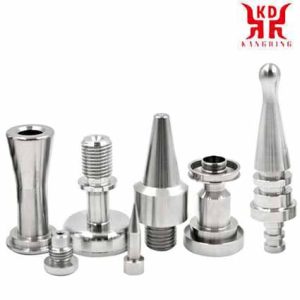
Traitement sur tour CNC de pièces non standard
Usinage sur tour CNC: it is characterized by being a very efficient machine tool for machining parts of revolution
The CNC lathe machining is a manufacturing process by chip removal with two fundamental movements that are: the material cutting movement that is rotary on the part and the advance movement, which are rectilinear and are carried out by the tool.
The CNC lathe is characterized by being a very efficient machine tool for machining parts of revolution.
CNC lathes have application in different industries: machinery manufacturers, automotive industry, furniture production, oil industry, medical industry, even for the manufacture of pipes for the transport of water.
Stages of the lathe machining process
Loading and unloading time: The moment of fixation of the part around. This stage varies depending on the size and weight of the part to be machined.
Cutting time: Moment in which the piece is cut with the chosen tool.
Tool replacement time: the time taken to change a tool whose useful life has ended.
Through this turning process, a large number of lathe operations can be carried out: parting off, grooving, internal and external threading, forage, tournant, orienté vers …
Tour automatique: It is the lathe that works automatically in its entirety. To achieve this, a long bar is attached to a tube with a head and is fitted with clamping pieces. It is especially recommended for machining small parts in a short time.
Copying lathe: It is the one that works by combining the hydraulic and electronic device. It is used to machine parts with different steps.
Vertical lathe: The lathe used for machining large parts (in which it is not possible to use a horizontal lathe due to its dimensions). They are normally guided by a numerical or cnc control.
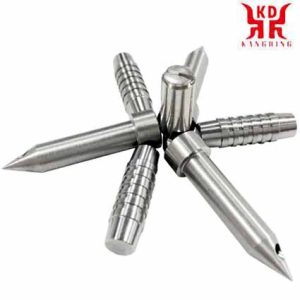 Lathe processing of stainless steel parts |
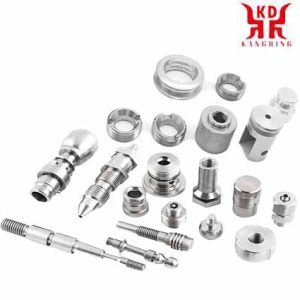 Lathe processing of aluminum alloy parts |
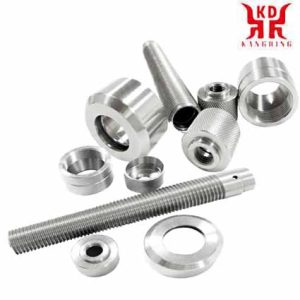 Lathe processing of titanium parts |
Types of lathes for machining:
Parallel lathe: It is the one used in a large number of maintenance workshops as it has a chip starter whose cutting movement adjusts to the rotating part. Any type of cut related to turning, forage, threading, restraining, moletage … Cependant, its use requires qualified and highly experienced personnel.
Cnc lathe: It is the numerical control lathe, which works by means of the computer’s numerical control. The cnc lathe is presented as the perfect machine for machining revolution parts due to its functional structure.
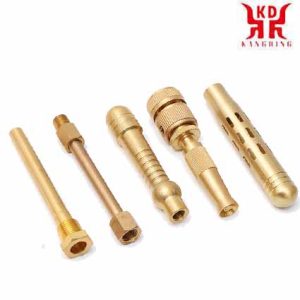
Lathe processing of copper parts
Avantage:
– It allows to obtain a greater precision in the machining of geometries of revolution.
– It can be easily changed from machining one part to another.
– Operator errors are reduced compared to conventional turning.
The KANGDING has the following CNC lathe machining equipment: Mori Seiki NT-3150, Danobat Danocenter NI-1200, Mori Seiki Dura T.
First thoughts on CNC lathe machining
These first considerations have a great influence on the selection and application of the turning tools.
The component
Take into account the dimensions and quality requirements of the component to be manufactured:
Type of application, for example longitudinal or profile turning, internal or external machining
Method type for example roughing or finishing
Large stable components
Small, long, slim, thin-walled components
Corner radius
Quality requirements (tolérance, Qualité de surface, etc.).
After analyzing the properties, the component is considered:
Does the material have good chip breaking qualities?
Is chip evacuation a critical factor? Mass production warrants an optimized tailor-made tool to maximize productivity.
Series size – single component or mass production?
Can the component be securely fixed?
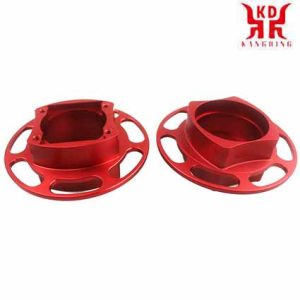
Surface treatment of lathe machined parts
The lathe machine
Machine considerations include:
Stability, drive power and torque, especially with larger components
Coolant supply or dry machining
Is there a need for high-pressure cooling for optimal chip breaking in long-chipping materials?
Time for tool change / number of tools in the turret
Speed limiters, in particular for bar feed magazines
Counter spindle or tailstock available?
 English
English العربية
العربية 中文(漢字)
中文(漢字) Čeština
Čeština Dansk
Dansk Nederlands
Nederlands Suomi
Suomi Français
Français Deutsch
Deutsch Italiano
Italiano 日本語
日本語 ಕನ್ನಡ
ಕನ್ನಡ 한국어
한국어 Português
Português Русский
Русский Slovenčina
Slovenčina Español
Español Svenska
Svenska Türkçe
Türkçe

